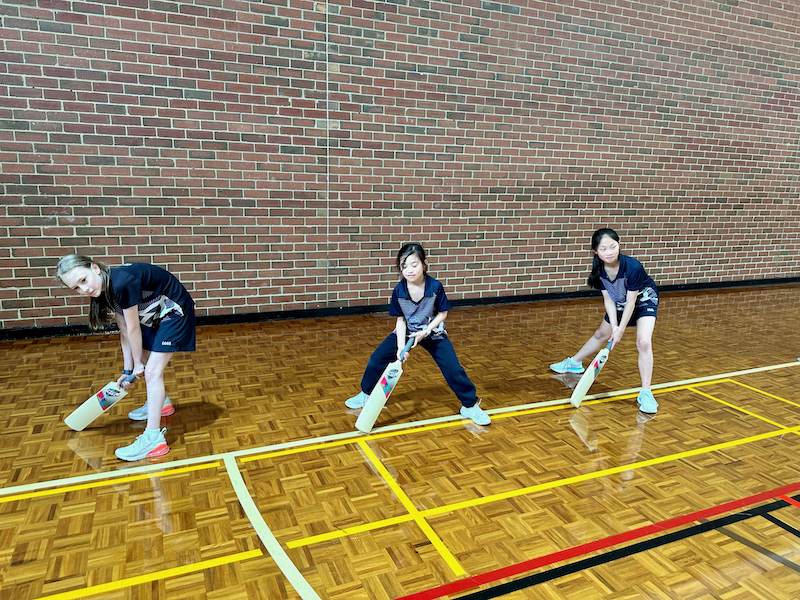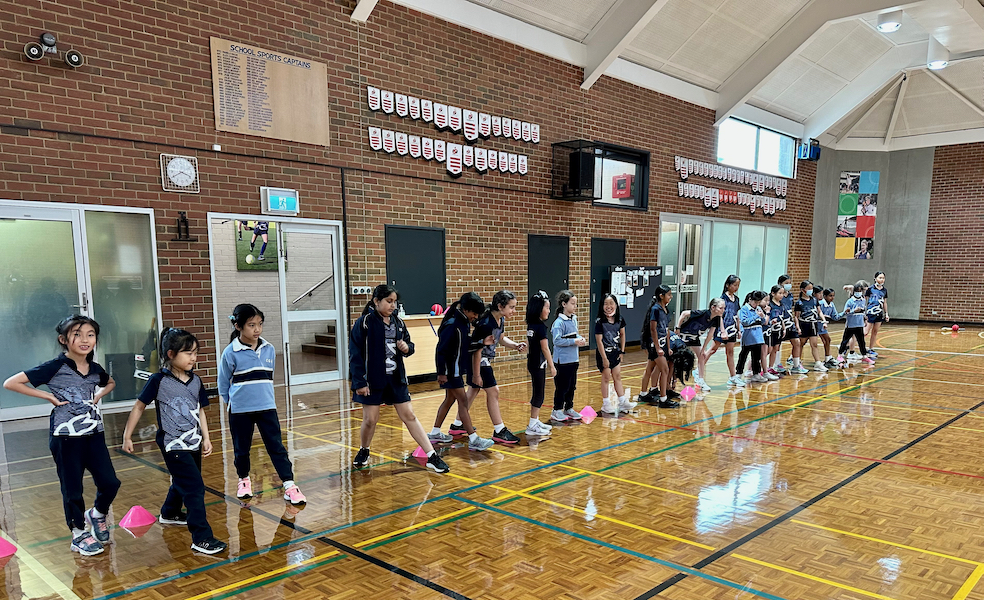Mrs Dunwoody shares the School’s reviewed and refreshed Uniform Guidelines.

On Thursday 20 October, students from Year 1 – 6 had the opportunity to perform in front of a small encouraging audience within the Junior School Hall. Students who complete weekly Speech and Drama sessions were asked to perform their short plays in front of the school community. The standard of speech and drama was excellent, and the students have continued to improve throughout the year. I would like to thank our Speech and Drama teacher Aleksis Payne for her work in planning and preparing the students for this important event. We look forward to more of these events in the future.
Congratulations to the following students:
Year 1 & 2
Akira Rajakulendran
Isabelle Gilliland
Kayla Chen
Evie Chen
Alice Lin
Lily Kwong
Year 3
Aurelia Poon
Claire Zhang
Year 4
Alice Xu
Ada Li
Zoe Raspin
Cynthia Li
Angela Lin
Estella Ouyang
Chloe Zhang
Khusshnaaz Kaur
Dora Zhu
Likka Jiang
Lucinda Reedman
Angela Wu
Cecelia Yang
Year 5
Shreya Swaminathan
Jennifer Wu
Isla Jang
Selinna Wang
Ailey Poon
Amiya Rajakulendran
Hanna Lindsay
Year 6
Rita Wong
Tiffany Lau
Stephanie Chiodo
Nellie Ruddle
I wish our Ormiston community a restful long weekend and look forward to seeing all students back at school on Wednesday 2 November.
Paul Donohue
Head of Junior School
This term the Early Learning 3 children have turned their observing eyes on ‘friendship’, and what it means within the context of our classroom. Taking moments to notice what they liked about their friends, and the values that underline connection, such as kindness, gratitude, respect, empathy, and cooperation, as a way of building social awareness, and emotional cognition. As an act of kindness and to show gratitude, the EL3 children have been writing letters to their family and friends, using ‘Dear’ and ‘From’ to form the structure of the letter. Before writing their message, the children used a mixed medium of letters and drawings. Enclosed is the EL3’s Letter Exhibition entitled Dear Friends and Family. From Us
Moving from surface to deep level learning, they listened to a reading of Davina Bell and Hilary Jean Tapper’s story book ‘What to Say, When You Don’t Know What to Say’. This group time invited children to take a closer look about different social scenarios, use their problem-solving skill to describe the conflict, read the emotion climate and model ways to overcome the problem using process-drama.
Sophia Stirling & Esther Wong
Early Learning 3 Teachers




Every learning opportunity, each day, has the potential to help learners practice various combinations of self-management, communication, collaboration, thinking, research and contribution. – Kath Murdoch, 2022
As part of tuning in, photographs of bees, pollination, hives and bee-keepers were used as a provocation for the children to document, through dialogue and drawing, their initial thinking about bees. As scientists the children also created wonderings, some of these were…
I wonder how they make honey. – Darcy
I wonder why bees sting people. – Aran
I’m wondering why bees don’t have arms. – Cecilia
I wonder why bees eat petals. – Jane
As researchers, as part of finding out, the children had time and opportunity to investigate their wonderings by gathering relevant information from a variety of sources. They viewed photographs, video clips, read books and engaged in felt play where they had an opportunity to make discoveries about the life cycle of a bee.
As reflective thinkers and communicators, the children made connections, identified new ideas and shared their discoveries in a range of ways (verbal, written, visual.) Children documented, through drawings and dialogue about the structure of bees, the relationship between bees and plants, the collection and transfer of pollen, the process of making honey, the role of beekeepers and the environmental importance of bees within our garden.
As scientists some of the discoveries made by children were:
Bees can make honey and they collect pollen. They carry the pollen with their back leg. – Alicia
I found out the queen bee lays the eggs. They’re called larvae. Bees don’t have arms they have six legs and four wings. – Cecilia
Bees can sting. They use the sting on their back. They sting because they want to protect themselves. – Laura
I found out that bees can make honey from nectar. They pass the nectar to another bee and then to another bee and they make it mix and they make honey. – Jane
Through this mini inquiry the children demonstrated growth in their skills and dispositions. The process of this learning has been documented in a book and the children look forward to sharing this with their families.
Angela Follacchio
Early Learning 4 Full Time Teacher




The EL4 Part-Time children are connecting to the wider community, gaining opportunities to relate to, and contribute to their understanding of the environment, during their excursion to the Senior School this week. The children discovered a very old Fig tree and learnt about the story of the Labyrinth. It was a meaningful context to access knowledge and engage with our local indigenous cultural heritage. Children walked on the spiralling pathway of the labyrinth and enjoyed their time in quiet contemplation as they did their observational drawings of their surrounds, including native trees and animals. Here are their thoughts about the visit to the Senior School:
“The highlight of the visit to the Labyrinth was the nature around it. There were native trees like Banksia and Bottlebrush. They are planted there for the birds to visit and for us to listen to.” – Avi
“I liked the animals around the Labyrinth because they looked pretty. The emu, wombat and Bunjul the Eagle, the Lyrebird. There were lots of stars and I liked the star in the middle that is Dara’s star.” – Heidi
“I liked the stars and the Labyrinth because I had to walk on it and get to the middle that had the star that is called Dara”. – Jackson
“I loved the Lyrebird. The Lyrebird has beautiful long feathers. I would love to go back again to walk on the Labyrinth. I loved seeing the Rainbow fish and there were 100 fish in the water, and they were not real, but they looked like real fish.” – Mia
Ramila Sadikeen
Early Learning 4 Part Time Teacher





Last Friday the Year 2 students participated in their first excursion of the year, to Como House. The students were so excited to dress up in olden day clothes and see what life was like in the past. Como House has a rich history and provides an insight into the previous owners of the property, the Armytage family. Students were lucky enough to take a tour through the house and play various games that children in the past would have played, such as tug of war, croquet, and quoits. The day didn’t come without hard work, with the students learning some of the jobs that servants would have to do for the Armytage family. This involved washing clothes in a bucket with a washboard and hanging them out to dry – Hopefully the students can show some of these skills at home!
Everyoneall had a wonderful time and learnt some great information about the past! Thank you again to Peggy and Jing for coming along and helping with this excursion.
Mikaela Stanaway
Year 2 Class Teacher





After competing at the Divisional Athletics Track and Field event in the torrential rain, Ava Pao, Cecelia Yang and Amiya Rajakulendran were blessed with more favourable conditions at the Eastern Regional track and field events. It is a wonderful achievement to qualify for regional athletics events and compete with selected students from the whole of the Eastern region. This is the first time we have had three students move to this stage of the competition.
Amiya – Discus
I was excited to compete at the regional athletics as I didn’t expect to qualify. The competition was hard because some competitors were more experienced than me. I enjoyed watching other students competing and it fun to travel on the school minibus.
Cecilia – 1500 metres
I was surprised that I qualified for Regional athletics and was really glad it was sunny and not rainy like on the divisional day. My race was quite tiring because there were very professional runners competing and I had to sprint to the finish line. I was pleased I completed the 1500 metres and finish in 5th place.
Ava – Hurdles
I had a great time at the athletics and was proud to finish first in my hurdles heat.
Our athletes demonstrated grit and determination in their events. We are very proud of their achievement to represent the school at this high level and look forward to them developing their skills further in athletics.
Nancy Robottom
Acting Deputy Head of Junior School




This term, as part of the Ormiston Active cocurricular program, we have been lucky to have Sharon from Cricket Victoria come in to run a great Introduction to Cricket Program. The students in years 2-6 have really enjoyed learning the basics of cricket and have practised their batting and fielding. Skills are taught using a range of fun games and activities with the focus on technique and learning the game. A big thank you to Usha in Year 8 and her mum Priya for helping to organise the program and who come along every week to support Sharon and help our Junior School students master the basics of cricket.
Kim James
Physical Education Teacher




The school year may be coming to an end, but the Secondary School students are showing no signs of slowing down!
A Christmas Toy Appeal, House Swimming Carnival, excursions and Mountfield Maestros - it's a busy time at Junior School!
The School was thrilled to celebrate the volunteers in our community who have contributed so much in 2025.

